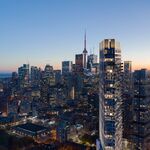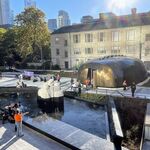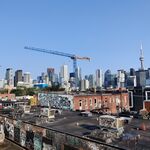Silence&Motion
Senior Member
I think you're misunderstanding my intent - I'm not saying it was EVER considered to be great. It's merely how the style/taste evolved - I'm trying to give the context for the project. It was entirely status quo - when you build a tall building in 1970's Toronto, the status quo was precast concrete because (a) it was the most economical technology at the time and (b) it fit into an aesthetic that was also prominent at the time. Just look at the Watercolor (aka the architects' intent). When I say "People went nutso for precast", maybe I should have chosen my words more carefully - it was builders and developers (the ultimate arbiter of the built residential environment) who were nutso for it. Coming from an era of most masonry construction, precast was an incredible system because it required so little labour and so little time to put into place. And it didn't look half bad, because the predominant aesthetic at the time didn't exclude it.
Today, developers and builders are still nutso for the cheapest technologies - window wall is great because it's quick and only needs one trade. Precast is still good because it lasts for ages and it's now cheap to stamp whatever pattern or texture you want into it - hence all the cityplace condos from the last year have precast that's stamped to look like masonry.
Okay, I see what you mean and generally agree with you.
The main points I want to make are these:
1. The area was not as desolate in the early 1970s as people keep saying (see the image Zeiss posted where there is no heavy industry anywhere near Yonge, only grassy fields and parking lots). People did think of the waterfront as a recreational destination, and Harbourfront was attracting hundreds of people everyday during the summers in the mid 1970s (in particular around Bathurst).
2. Yes Habour Square is a product of its time, but it could have very realistically been designed much differently - still with space for parking, still using existing technology and materials - in ways that would have maintained openness between Queen's Quay and the water's edge.



























